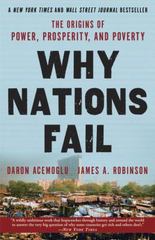Question
Question 56(1 point) If there is shortage of loanable funds, which of the following is most likely to happen? Question 56 options: a) The supply
Question 56(1 point)
If there is shortage of loanable funds, which of the following is most likely to happen?
Question 56 options:
a)
The supply for loanable funds shifts right and the demand shifts left.
b)
The supply for loanable funds shifts left and the demand shifts right.
c)
Neither curve shifts, but the quantity of loanable funds supplied increases and the quantity demanded decreases as the interest rate rises to equilibrium.
d)
Neither curve shifts, but the quantity of loanable funds supplied decreases and the quantity demanded increases as the interest rate falls to equilibrium.
Question 57(1 point)
If the inflation rate is 3 percent and the real interest rate is 5 percent, what is the nominal interest rate?
Question 57 options:
a)
2 percent
b)
3 percent
c)
5 percent
d)
8 percent
Question 58(1 point)
If Parliament instituted an investment tax credit, which of the following would most likely happen to the interest rate and saving?
Question 58 options:
a)
The interest rate would rise, and saving would rise.
b)
The interest rate would fall, and saving would fall.
c)
The interest rate would rise, and saving would fall.
d)
The interest rate would fall, and saving would rise.
Question 59(1 point)
Which of the following is most likely to happen if Canada increases its budget deficit?
Question 59 options:
a)
Private saving will decrease and so shift the supply of loanable funds left.
b)
Investment will decrease and so shift the demand for loanable funds left.
c)
Public saving will decrease and so shift the supply of loanable funds left.
d)
Private saving will increase and so shift the supply of loanable funds to the right.
Question 60(1 point)
How does the supply and demand for loanable funds model reflect an increase in the goods and services tax rate?
Question 60 options:
a)
The supply curve shifts to the left, while the demand curve remains unchanged.
b)
The supply curve shifts to the right, while the demand curve remains unchanged.
c)
The supply curve remains unchanged, while the demand curve shifts to the left.
d)
The supply curve remains unchanged, while the demand curve shifts to the right.
Step by Step Solution
There are 3 Steps involved in it
Step: 1

Get Instant Access to Expert-Tailored Solutions
See step-by-step solutions with expert insights and AI powered tools for academic success
Step: 2

Step: 3

Ace Your Homework with AI
Get the answers you need in no time with our AI-driven, step-by-step assistance
Get Started


